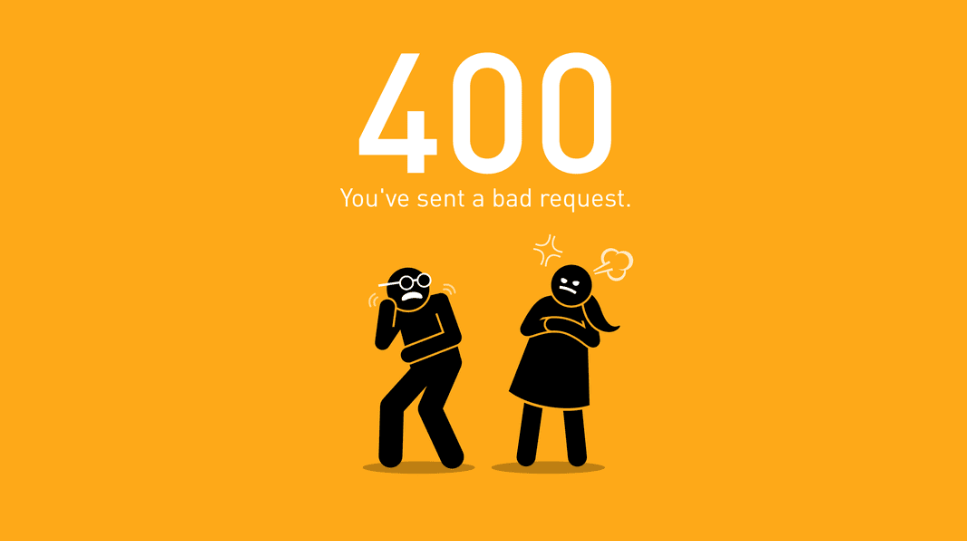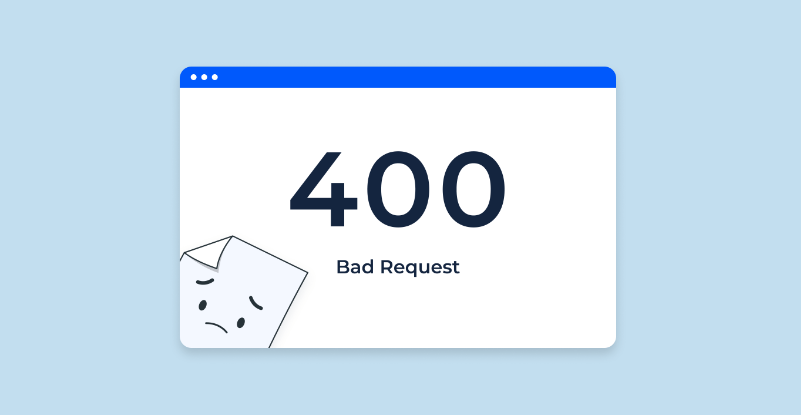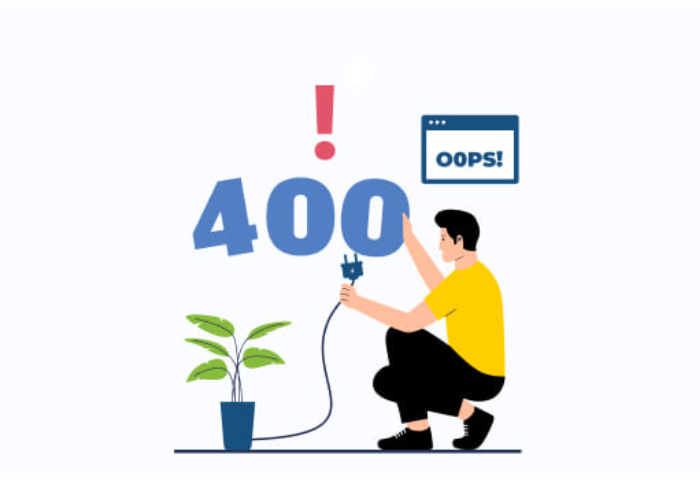Encountering a “Bad Request” error can be frustrating, especially when it interrupts your workflow or browsing experience. This error, typically represented by the HTTP status code 400, indicates that the server cannot process the request due to a client-side issue. Understanding this error is the first step in troubleshooting and resolving it effectively.
A Bad Request error occurs when the server deems the request invalid. This invalidity can take its source from many facets, including syntactic mistakes in the request, malformed headers, or wrongly built URLs. Thus, it is much easier to determine the right course of action to take if the actual cause of getting a Bad Request message is known.
Frequent Reasons for Bad Request Errors
Incorrect URLs or syntax issues frequently lead to Bad Request errors. These can be typographical errors, missing characteristics, or improperly formed query strings. These errors can be prevented if URLs and the parameters included in the query are stringently correct.
Another common factor is corrupted cookies or cache. Over time, browsers accumulate data in cookies and cache, which can become outdated or corrupted. This corrupted data can interfere with communication between the browser and the server, resulting in a Bad Request error. Regularly clearing cookies and cache can prevent such disruptions.
Additionally, issues with the HTTP request headers can trigger a Bad Request error. The server may reject the request if the headers are missing, incorrectly formatted, or contain inappropriate values. It’s essential to ensure all necessary headers are included and correctly formatted.
Oversized request bodies can also lead to this error. Some servers have limits on the size of the request body they can process. Exceeding this limit can result in a 400 status code. Ensuring the data sent in the request body is within acceptable size limits can prevent this issue.
Misconfigured client-side applications are another potential cause. Applications that interact with web servers may have settings that, if incorrectly configured, result in malformed requests. Reviewing and adjusting these settings can help in reducing Bad Request errors.
Lastly, if interacting with APIs, incorrect endpoint usage or method types can cause Bad Request errors. Ensuring that the correct API endpoint and method (GET, POST, etc.) are used, as per the API documentation, can prevent these errors.
Identifying the Source of the Error
To identify the source of a Bad Request error, start by meticulously examining the URL for any inaccuracies. Even minor typographical errors or misplaced characters in the URL can trigger this error. Verify the syntax and ensure that all parameters are correctly formatted.
Next, scrutinize the HTTP request headers. Inaccurate or missing headers are common culprits behind Bad Request errors. It’s essential to check all headers necessary and guarantee their correct format. Inspecting content type, authorization, and other crucial headers could help find the problem.
The other important activity is to delete browser cache and cookies. This action can discharge potential conflicts arising from old or contaminated data, eradicating the error. After clearing the cache, attempt to re-access the resource to see if the issue persists.
If you’re working with a web API, ensure the API endpoint and method are correct. Cross-reference with the API documentation to confirm that the endpoint, HTTP method (such as GET, POST, etc.), and parameters align with the specified requirements.
For those developing or managing client-side applications, review the application’s configuration settings. Misconfigured settings can result in malformed requests, leading to a Bad Request error. Ensure that all settings related to requests are correctly configured.
Additionally, if oversized request bodies are suspected, check the sent data. Ensure that the size of the request body falls within the acceptable limits set by the server. Reducing the size of the request body can prevent this type of error.
Thus, if you analyze these areas, you can easily find out what has led to a lousy request alert and what corrective measures have to be taken.
Remedies for Bad Request Errors
To address Bad Request errors effectively, start by verifying the accuracy of the URL and query parameters. Even minor mistakes can lead to this error, so double-checking these elements is crucial.
If the issue persists, inspect and correct the HTTP request headers. Ensuring they are properly formatted and include all necessary information can resolve many client-side problems. Pay special attention to headers related to content type and authorization.
For web API interactions, make sure you’re using the correct API endpoint and method as specified in the documentation. This includes confirming that all required parameters are included and correctly formatted.
Clearing the browser cache and cookies is often a simple yet effective solution. This action can remove any corrupted or outdated data that might interfere with server communication.
If the requested body size is concerning, consider reducing the sent data. Servers often have limitations on the size of request bodies they can process, and staying within these limits can prevent errors.
Those managing or developing client-side applications should check the application’s configuration parameters. This means that when the configurations are not adequately made, the requests that are being made will be malformed, hence the need to use the Bad Request Errors. These settings can be fine-tuned to meet server requirements, minimizing this problem.
If implemented and automated consistently, these remedies can help problem-solving and, more specifically, help to deal with the manifestation of Bad Request errors while communicating with web servers and APIs.
Advanced Methods for Troubleshooting
For more complex issues, advanced troubleshooting methods may be necessary. This can very well be accomplished using developer tools obtainable with the latest web browsers. These tools allow you to ‘inspect’ the request and response, which allows gaining information like when the request is incorrect – it is a bad request.
Implementing server log analysis is another of the advanced techniques. Using the server logs, one may get more detailed information on the requests and the errors that led to the wrong request. From these logs, you can get directed to a more accurate solution.
Also, it is possible to track the movement of information between the client and the server using network analysis methods. The good thing about it is that you capture all the packets on the network, and you get to see the occurrence of an error and the flow of it.
Using diagnostic tools provided by web frameworks or libraries can also be beneficial. These tools often come with features that log detailed request and response data, highlight errors, and suggest potential fixes.
For developers, debugging the application code might uncover hidden issues that contribute to the Bad Request error. Setting breakpoints and step-by-step execution can reveal logical errors or misconfigurations that aren’t immediately apparent.
Fourth, it becomes possible to turn to community forums or support channels to receive new ideas and accurate solutions. Indeed, you may get advice and measures that other developers or users who have faced similar problems have come across.
Steps to Prevent Bad Request Errors
Implementing best practices in web development can significantly reduce the occurrence of Bad Request errors. One essential step is input validation. This way, you can prevent common instances, such as the application making requests with ‘bad’ parameters, by verifying the parameters before passing them to the server.
The fourth is maintaining the evaluation of the code and configurations with frequent updates and checks. The most straightforward reason is that the code or configurations may be outdated and cause errors – such as a Bad Request error. Updating your software and libraries will guarantee that your programs will run smoothly where compatible and contain the latest enhancements and features. Additionally, it is more secure from different threats.
Proper error handling in the client-side application is also critical. Implementing robust error-checking mechanisms can catch potential issues before they are sent to the server. For instance, verifying the completeness and correctness of HTTP request headers and parameters can preempt many common causes of Bad Request errors.
Documentation plays a vital role as well. Comprehensive and clear documentation can guide developers and users in correctly formatting requests and understanding the requirements of the server or API. Well-documented endpoints and methods can prevent miscommunications and incorrect usage.
Lastly, employing automated testing tools can help identify and rectify issues before they make it to production. Regular testing, including unit tests, integration tests, and end-to-end tests, can catch errors early in the development cycle, reducing the risk of encountering Bad Request errors in a live environment.
Summary and Encouragement
As this blog post has shown, handling Bad Request errors may be difficult, but if the causes and remedies are well understood, the internet could be a far better place. Much to the solutions of these errors, every facet of the web URLs, HTTP headers, and request bodies must be well scrutinized. If the URLs are accurate and the headers are correctly formatted, many client-side problems can be solved almost instantly.
Users need to clear their browser cache and cookies occasionally to help avoid data corruption, which is one of the common causes of lousy request errors. If you are one of those using web APIs, it is always essential to ensure that you adhere to the right endpoint and method specifications depending on the API in question.
Furthermore, correct configuration of the settings and validating the inputs that are to be passed to the web applications are things developers should avoid when handling requests.
Additional methods of analytics include the use of developer tools, analyzing server logs, and accessing network analysis, which are effective in uncovering more complex solutions to problems. If you need more support, do not be shy to contact community forums or support channels.
Incorporating best practices, such as updating your codebase, employing robust error handling, and utilizing automated testing tools, can help prevent these errors from occurring in the first place. Informing Web servers and APIs: Reducing the likelihood of encountering specific problems can make the interactions easier.
Please do not forget that such an approach will not only eliminate present bad request errors but also prevent them in the future, making your work and the experience of using the website more effective.



